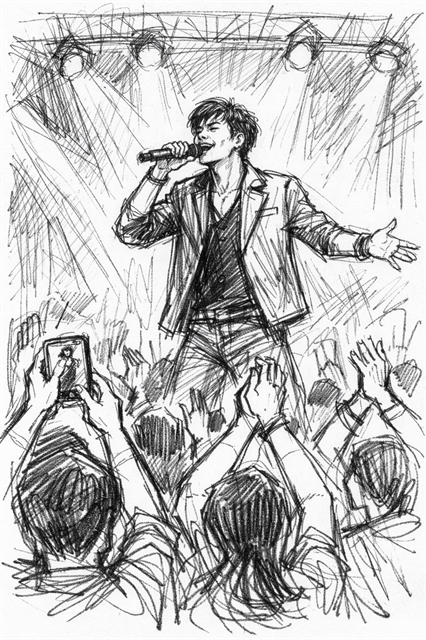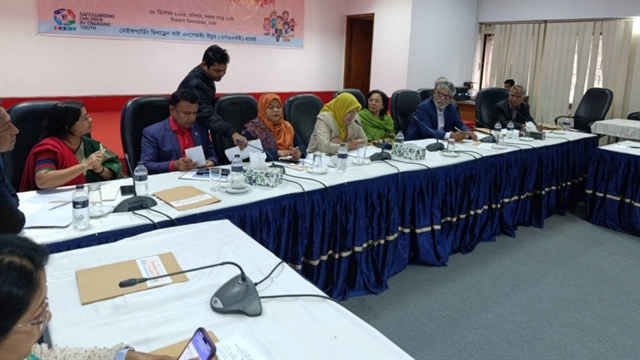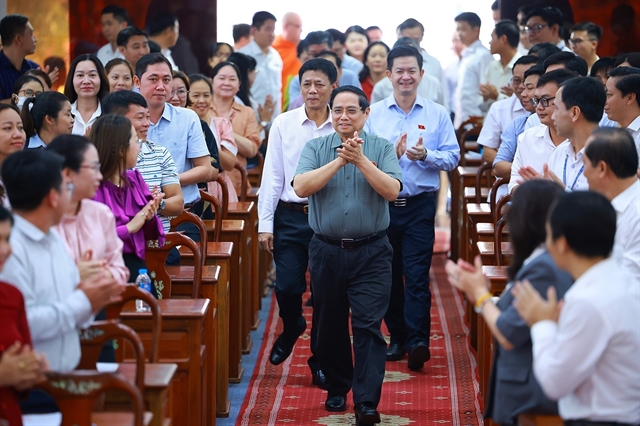 Talk Around Town
Talk Around Town

A hypothesis question at the end-of-term final history exam at Nguyễn Tất Thành Secondary School in Hà Nội was an inspiration for students.
 |
by Vĩnh Hà
“What would you do if you were a high court mandarin during the Nguyễn Dynasty?”
The hypothetical question was asked in the end-of-term history exam at Nguyễn Tất Thành Secondary School in Hà Nội. It made a strong impression not only on the students, but some teachers said they read the answers to gain more insight.
The exact test question read, “What measures would you take, if you were a high court mandarin, to avoid our country falling under French control?”
Lê Thu, head of the school’s history department said, “Many young students were put off history as a subject at school, because they were afraid of the tests that asked for specific dates, statistics, mainstream comments and analysis.
“We tried to give space for an open-ended answer when we worked on the test questions.”
Many parents and educators have complained that the teaching of history subject in schools has become quite boring over the years, and this attempt by the teachers at Nguyễn Tất Thành school has not only motivated its students and teachers, but when the news spread online, a number of people became interested and applauded the question.
History teacher Thu said that it was only the final term question after more active learning in class throughout the semester, when students were divided into smaller groups for discussion and debate.
“I was quite impressed with the large amount of knowledge that our students have researched. There was a certain level of innocence in their answers, but the fact is they were very active and took the subject seriously,” she said.
One of the students expressed their findings from history textbooks, but they also took the chance to reveal personal feeling on the issue: “Our troops were small, the weapons were weak, so we needed to find the opponents’ weak points to fight back. In 1896, when a large number of French troops were moved to China and only about 1,000 troops stayed back in Gia Định Citadel. If Gia Định Governor Nguyễn Tri Phương knew this and launched his attack, history might have been different.”
Phương was the governor of Gia Định, the neighbouring district of Sài Gòn and together with Sài Gòn established what is known as Hồ Chí Minh City today. He was a symbol of Vietnamese patriotism and many generations hold a great amount of respect for him. Many avenues and schools have been named after him, a staunch righteous scholar and army commander who took his life to protect his honour.
The fact is that the French occupied Gia Định Citadel, later taking over six provinces in the south, and imposing their rule on the country for more than 80 years.
Many Vietnamese resented the French occupation and it’s now become history: Under the leadership of Hồ Chí Minh, Việt Nam fought the French, won independence in September 1945 and later won the famous battle of Điện Biên Phủ after nine hard and bloody resistance years.
Digging up the historical questions, according to teacher Thu, was a very active way of learning history. “It showed that the students were doing their homework and by actively reading and researching history books, they learned so much more than just learning the facts and figures,” she said.
Some students showed themselves to be true leaders, even through their essays, “If I were occupying an important position under the Nguyễn Court, I would propose a change in the mandarin hierarchy and restructure the army. I would propose a more lenient foreign policy, open our ports for free trade with other countries and lift the embargo…,” one wrote.
Another student wrote, “We would need sound educational reform by issuing a talent-based employment system. We would need to send our budding young people to study abroad and then make them return to work for the country.”
The variety of answers show a wide range of topics that interested the young students. In their roles, the teachers’ bank of questions also ignited curiosity and motivated the students. The questions all tried to get students involved in the possibility of reshaping history, hypothetically, or help to shape the future.
Other questions included “Can you find remnants of the Văn Lang period in life today?” or “Imagine you are a historian or an archaeologist, can you give a presentation about a middle aged monument or construction site?”, or referring to World War I, the question was, “What, in your view, would resolve conflicts?”
The history teachers at Nguyễn Tất Thành school all know very well how to plan a group debate in class, a museum or field trip to former battlefields or work on a history class project or even involve other subjects such as literature or geography.
A teacher said she tried a more visual way to teach her class. History text books only have a few lines on a subject, but she found a more specific way to give students an image to remember.
“When teaching about the discovery of America, I showed the students a picture of a man checking the teeth of a slave during a slave purchase and let the students come to their own conclusions," he said.
“We divided the class into teams of slave traders and slaves and the discussion became very heated.”
Both teams had their own points of view and teachers were not supposed to provide the ultimate correct answers.
“Positive and negative sides co-exist on one issue and we need to let the students analyse it for themselves,” one teacher said.
“On one side, we need to ensure our students have enough knowledge to pass the exam,” said Thu Anh, the school’s principal. “But what’s more important is that our students know what to react to when facing tough questions, and value the historical effects on the world of today.”
The national history tests still focus on the facts and figures, and what ever the method, students need to pass the test.
“We stick to our principles to make sure the students get the facts and figures correct, but the way for them to arrive at an answer sometimes requires a more creative approach. There’s a wide range of tools for them to remember, such as charts and graphics and supporting historical documents. All of these tools help them voice their opinions, and as a result shape their attitude,” Anh said.
History as such has become part of their lives, and won’t fade away. VNS




